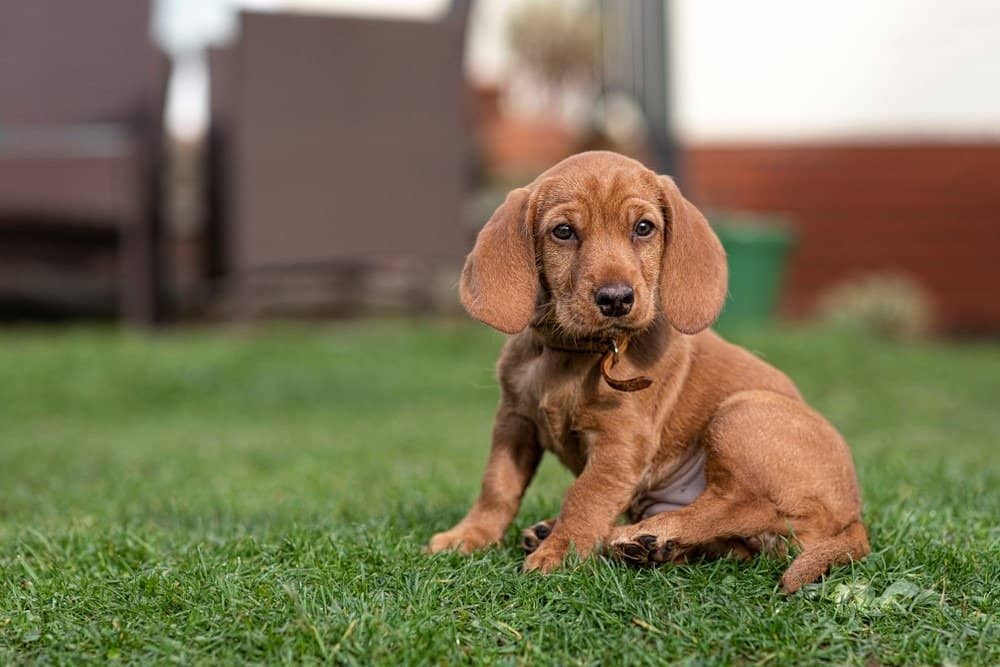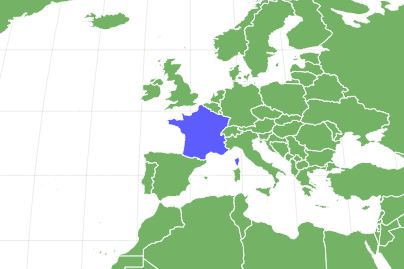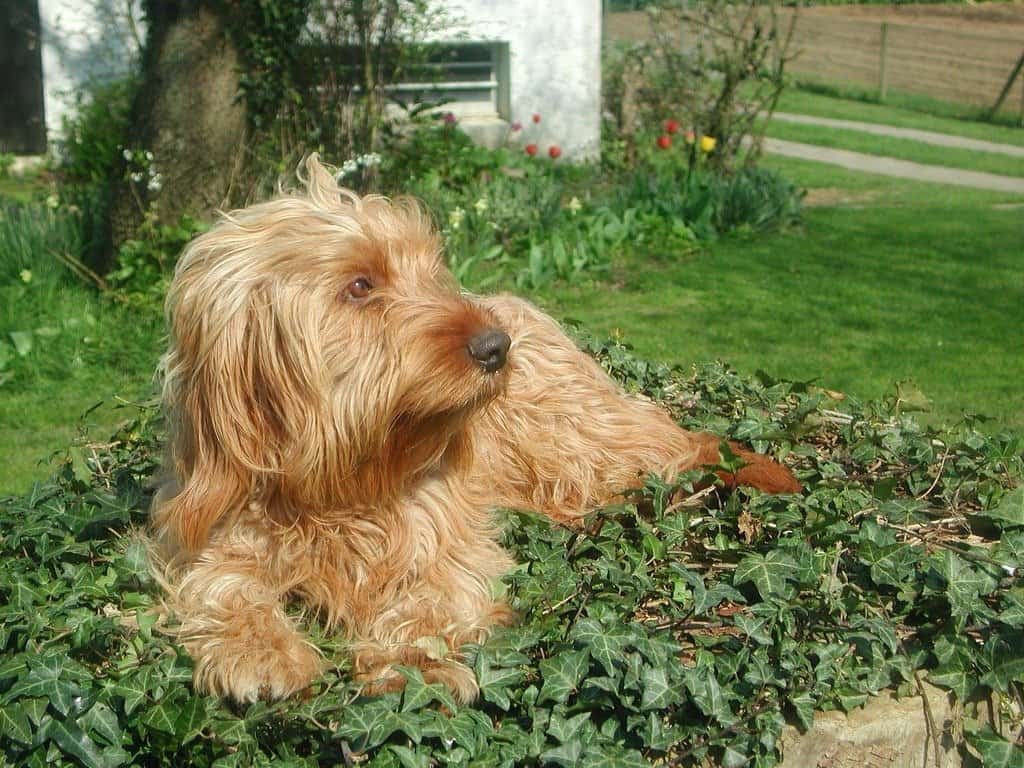A friendly and intelligent hunting dog that loves nothing more than to spend time with its owner.
Advertisement
Basset Fauve de Bretagne Scientific Classification
- Kingdom
- Animalia
- Phylum
- Chordata
- Class
- Mammalia
- Order
- Carnivora
- Family
- Canidae
- Genus
- Canis
- Scientific Name
- Canis lupus
Read our Complete Guide to Classification of Animals.
Basset Fauve de Bretagne Conservation Status
Basset Fauve de Bretagne Facts
- Fun Fact
- A friendly and intelligent hunting dog that loves nothing more than to spend time with its owner.
- Temperament
- Intelligent, playful, and diligent
- Diet
- Omnivore
Basset Fauve de Bretagne as a Pet:
- General Health
- Energy Level
- Shedability
- Trainability
- Intelligence
- Tendency to Chew
- Size
- Family and kid friendliness
- Yappiness / Barking
- Moderate
- Separation Anxiety
- High
- Preferred Temperature
- Average climate
- Exercise Needs
- Moderate
- Friendly With Other Dogs
- Moderate
- Pure bred cost to own
- At least $1,200
- Dog group
- Working
- Male weight
- 27-35 lbs
- Female weight
- 27-34 lbs
This post may contain affiliate links to our partners like Chewy, Amazon, and others. Purchasing through these helps us further the A-Z Animals mission to educate about the world's species.
View all of the Basset Fauve de Bretagne images!
The Basset Fauve de Bretagne is a friendly and intelligent hunting dog that loves nothing more than to spend time with its owner.
The history of this breed dates all the way back to 16th century France when the long-legged Grand Fauve de Bretagne was first bred. Originating from the region of Brittany (or Bretagne in French), this breed was often associated with French royalty and aristocracy. The lower classes were not allowed to own or hunt with the breed until the French Revolution abolished many aristocratic privileges in 1789. Once it was available to the public, people began to breed the dog for shorter legs, which made it a better hunting companion.
See all of our expert product reviews.
Although the Grand Fauve de Bretagne is now extinct, its bloodline still flows through the modern breeds of griffons and bassets. The Basset Fauve de Bretagne carries on the tradition as a great hunting companion that leverages the considerable power of its nose to detect and find game. In fact, scent hounds have some of the most powerful noses among all dog breeds. This dog has drooping ears, a stiff tail, and a fawn-colored wiry coat of fur (with wheat-colored and reddish variations). The name roughly translates to a fawn-colored basset of Brittany. Although a mainstay of the France hunting scene, this breed is relatively new to the United States. The American Kennel Club only included it as part of its Foundation Stock Service in 2015.
3 pros and cons of owning a Basset Fauve de Bretagne
| Pros! | Cons! |
|---|---|
| Friendly and relatable The Basset Fauve de Bretagne loves being in the company of people. | Distracted by scent trails The Basset Fauve de Bretagne has a tendency to literally follow its nose everywhere. |
| Athletic and energetic Despite its small size, this breed also loves to engage in exercise and skill-based tasks. | Slightly stubborn Although it can do a lot, this breed also has a mind of its own. |
| Does not shed a lot This breed has a very manageable coat of fur that requires only semi-frequent brushing. | Separation anxiety If left alone for too long, this breed may create its own amusement or engage in destructive behavior. |
Basset Fauve de Bretagne Size and Weight
This breed is a small- to medium-sized dog with short legs (the name basset literally means low set). Both the males and females tend to be around the same size.
| Height (Male) | 12 to 15.5 inches |
|---|---|
| Height (Female) | 12 to 15.5 inches |
| Weight (Male) | 27 to 35 pounds |
| Weight (Female) | 27 to 35 pounds |
Basset Fauve de Bretagne Common Health Issues
This is a very healthy dog that can sometimes live 15 years or more. Some of the more common health problems include epilepsy, skin allergies, progressive retinal atrophy, and cancer. It is also prone to some thyroid issues in its older age. The signs of an underactive thyroid include lethargy, weight gain, and constipation. A responsible breeder should screen for heritable problems early on with a genetics test.
Health and Entertainment for your Basset Fauve de Bretagne
See all of our expert product reviews.
To sum up some of the most common health problems:
- Skin allergies
- Eye diseases
- Cancer
- Epilepsy
- Hypothyroidism
Basset Fauve de Bretagne Temperament
These dogs are a very affectionate breed with a keen, constantly roaming mind. The friendly personality is well-suited for the home, but the hunting pedigree also makes it well-suited for the outdoors. One of the more appealing traits is its sheer gentleness. This breed gets along well with almost anyone who reciprocates its kindness. As long as it has enough mental and physical stimulation throughout the day, it is adaptable to a lot of different situations. You do not necessarily need to be a hunter to enjoy this breed’s personality, though the dog does love to find a scent trail and stick with it.
How to Take Care of the Basset Fauve de Bretagne
These dogs require a moderate amount of care in regards to their dietary, grooming, and exercise needs. It is a good idea to keep your dog busy throughout the day with some kind of stimulation. Once its energy is expended, the dog will relax around the home. An annual health checkup is a necessity, even if the dog appears to be in great health. Puppies may require some special care.
The Best Dog Food for Basset Fauve de Bretagnes
The Basset Fauve de Bretagne should be fed on a regular schedule with a specialized diet for small high-energy breeds. The dog’s age should not necessarily be a factor in its diet. However, since they have a tendency to experience allergies, consider feeding a limited-ingredient diet or allergy-mitigating dog food that removes ingredients you’ve found to irritate your Basset Fauve de Bretagne.
This breed does not have a big tendency to gain weight, but you should always carefully monitor the dog’s calories and limit treats, preferably to training and commands. If you’re unsure about what to feed it, then you should consult with your vet.
Our recommendation at A-Z Animals of the best dog food for Basset Fauve de Bretagne dogs is Hill’s Science Diet Dry Dog Food, Adult, Small Paws for Small Breed Dogs.
This vet and nutritionist-designed diet has chicken and pork ingredients, alongside carrots and many healthy vitamins and minerals. There’s taurine, excellent for both the heart and eyes, and the beta-carotene adds a one-two punch of vision/eye support. The omega-6 fatty acids sustain the immune system, and with the help of some vitamin E and biotin, contributes to clear skin and a luscious coat.
Check out the ingredients in Hill’s Science Diet Small Paws dog food for yourself on Chewy or Amazon.
- Chicken and rice formula for small breeds Adult 1-6
- Omega 6 fatty acids and vitamin E for healthy skin and shiny coat
- Natural ingredients and antioxidants for immune health
Basset Fauve de Bretagne Maintenance and Grooming
These dogs require weekly grooming with a fine-toothed comb and a stiff brush. The coarse, wiry hair is fortunately resistant to dirt and matting. It also does not shed a whole lot (though it’s not hypoallergenic either). The coat helps to insulate the dog in colder climates, but if you live in a warmer area, then you may want to consider trimming the dog’s hair to prevent discomfort and overheating. You should also endeavor to check the ears, trim the nails, and brush the teeth on a regular basis.
Basset Fauve de Bretagne Training
This breed can be trained very well to follow commands, perform tricks, and stop certain unacceptable behaviors. But despite its friendly and determined personality, this breed does have a stubborn streak that may need to be overcome through careful training. It also has a tendency to start sniffing around when you just want it to focus on your commands. A gentle and patient temperament is required to deal with this breed. Do not ever yell at the dog or lash out at it. Treats can be given from time to time to help build up and reinforce its training.
Basset Fauve de Bretagne Exercise
This is a high-energy breed that requires fairly frequent exercise between 30 and 60 minutes per day. It is a good idea to keep this dog on a leash, because it may have the tendency to become distracted and wander off. You should also try to entertain the dog either indoors or outdoors with games (like hide and seek), ball catching, agility training, tricks, or sports. In warm weather, you should always keep your dog cool and hydrated.
Basset Fauve de Bretagne Puppies
These dogs have a friendly and affectionate personality that shines through even as puppies. Its eagerness to experience new people and places will give it fresh opportunities to become well-adjusted as an adult. Early training should help it develop properly. According to the American Kennel Club, this breed’s nose has a strong tendency to overpower its other senses. Sometimes it may even appear to ignore its owner’s commands. Training should help to break or overcome this tendency.

©Paul Steven/Shutterstock.com
Basset Fauve de Bretagne and Children
This is a very friendly breed that enjoys the presence of children no matter the age. However, an adult should always be present to monitor any interaction. The breed’s small size can be easily overwhelmed by a larger child. You should teach your children how to handle the dog with gentleness and care. Dog ownership is also a good learning experience to teach your children responsibility.
Dogs Similar to the Basset Fauve de Bretagne
If you are a fan of scent hounds, then you might want to check out these similar breeds:
- Basset Hounds – Bred in Britain from French stock, the ever-popular basset hound has big ears, droopy eyes, and a long body with black, white, and brown colors. It is patient, playful, and friendly with adults and children alike.
- Dunker – Also known as the Norwegian Hound, the Dunker is a medium-sized scent hound with an exquisite sense of smell. The hair is generally shorter than the Basset Fauve de Bretagne, but the Dunker’s intelligence, playfulness, and friendliness are all similar.
- Alpine Dachsbracke – Originating from Austria, the Alpine Dachsbracke has a long body, short legs, and big drooping ears with short, dense dark red fur. This scent hound is well-adapted for tracking boar, hare, and foxes.
Famous Basset Fauve de Bretagnes
The Basset Fauve de Bretagne is a relative niche breed, but there are a few examples of it throughout history.
- King Francois I of France owned a pack of Brittany scent hounds in the 1500s. Although much larger than the modern Basset Fauve de Bretagne, the two breeds are closely related.
- The Basset Fauve de Bretagne is a common entry in French hunting competitions. One such dog named Jason was featured in the La Montagne magazine in October of 2014.
Popular Names for the Basset Fauve de Bretagne
Due to its relative obscurity, it can be difficult to find a good name for this dog. But according to the website Pet ID Register, here is a selection of five popular male and female names each:
- Buddy
- Cooper
- Beau
- Jack
- Tucker
- Molly
- Bella
- Ginger
- Luna
- Angel
Basset Fauve de Bretagne FAQs (Frequently Asked Questions)
How do you pronounce Basset Fauve de Bretagne?
The name of this breed may look complicated at first, but even an English speaker should be able to achieve a rough approximation of the sound. Basset is simply pronounced ba-set (with an “a” as in gas). Fauve is pronounced more like “fove” with a rounded “o” sound (as in “float” or “boat”). The de has an “eh” sound. Bretagna is pronounced with an “e” as in “the,” an “a” as in “father,” and “gn” with a sort of “ny” sound as in “lasagna.” The final “e” tends to be very short or not pronounced at all.
Do Basset Fauve de Bretagne dogs shed?
The Basset Fauve de Bretagne sheds a small to moderate amount, but it still requires weekly brushes to keep it clean and free of dirt and dead hair. The breed is not hypoallergenic.
What is the lifespan of a Basset Fauve de Bretagne?
The Basset Fauve de Bretagne has a typical lifespan of 11 to 14 years. If your dog is in particularly good health, then it may live a few years longer.
How big does a Basset Fauve de Bretagne dog get?
The Basset Fauve de Bretagne rarely gets bigger than 35 to 40 pounds in weight and 16 inches in shoulder height.
Are Basset Fauve de Bretagnes good family dogs?
The Basset Fauve de Bretagne is an excellent family dog that gets along well with everyone, including children and adults. If you own smaller animals, though, then you may want to think hard about introducing this dog into your home. It does have the tendency to chase smaller animals around.
Are Basset Fauve de Bretagnes herbivores, carnivores, or omnivores?
Basset Fauve de Bretagnes are Omnivores, meaning they eat both plants and other animals.
What Kingdom do Basset Fauve de Bretagne belong to?
Basset Fauve de Bretagne belong to the Kingdom Animalia.
What phylum do Basset Fauve de Bretagnes belong to?
Basset Fauve de Bretagnes belong to the phylum Chordata.
What class do Basset Fauve de Bretagnes belong to?
Basset Fauve de Bretagnes belong to the class Mammalia.
What family do Basset Fauve de Bretagnes belong to?
Basset Fauve de Bretagnes belong to the family Canidae.
What order to Basset Fauve de Bretagnes belong to?
Basset Fauve de Bretagnes belong to order Carnivora.
What type of covering do Basset Fauve de Bretagnes have?
Basset Fauve de Bretagnes are covered in Hair.
What is the scientific name for the Basset Fauve de Bretagne?
The scientific name for the Basset Fauve de Bretagne is Canis lupus.
What is an interesting fact about Basset Fauve de Bretagnes?
The Basset Fauve de Bretagne is a friendly and intelligent hunting dog that loves nothing more than to spend time with its owner.
Thank you for reading! Have some feedback for us? Contact the AZ Animals editorial team.
Sources
- American Kennel Club / Accessed December 8, 2020




















